Being the only production 3-rotor motor ever made by Mazda, the 20B engine is commonly regarded as the “big block” of the rotary world.
It was the first sequential twin-turbocharged to ever come into production, let alone being a 3 rotor Wankle — the 20B truly is Mazda’s crown jewel. It reinforces their unwavering dedication to this bizarre engine layout.
It’s powerful, rare, and highly coveted. From the rollout to the performance specs, it’s one wild ride you’ll want to get on.
We’ll clue you in here by sharing everything you want to know about this engine. In this guide, we’ll discuss 20B engine specs, reliability, maintenance, and swap info.
What Is a 20B Engine?
Back in 1990, Mazda introduced a novel engine to the market — their only rotary at the time. It was the world’s first mass-produced 3-rotor engine with a twin-turbo setup, and people loved it.
What really drove the market wild for this engine is that not only was it a first, but it only came on the Mazda Eunos Cosmo, and only in the Japanese market. They also only produced the car from 1990 to 1996, making finding the engine a bit of a challenge.
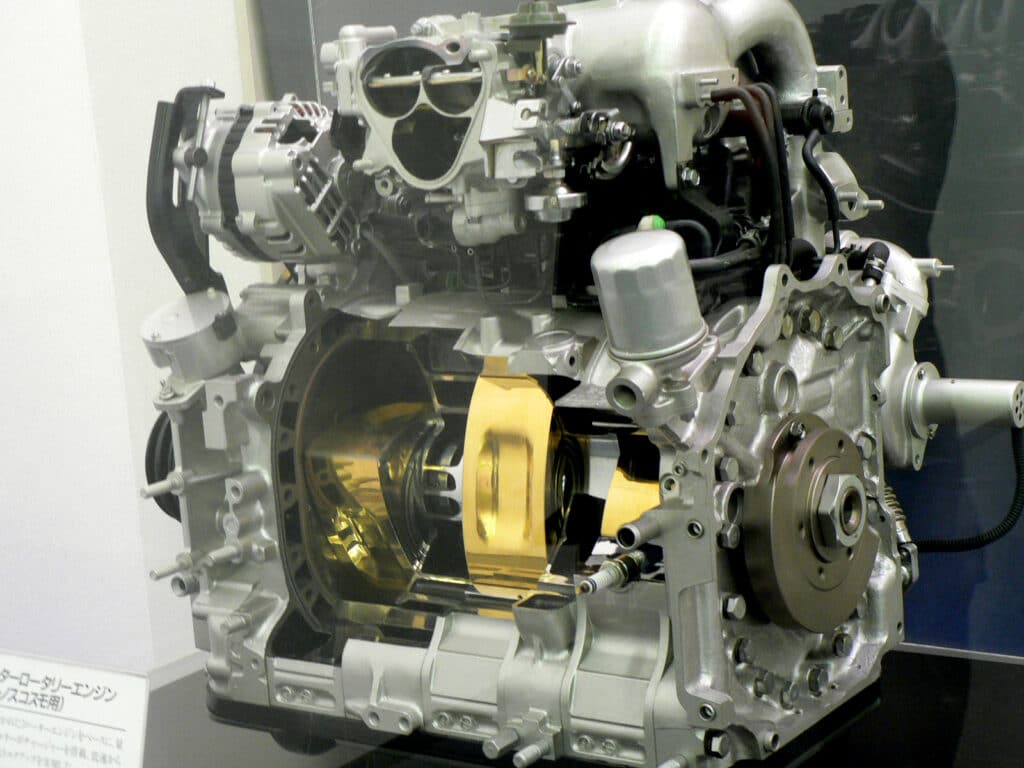
What’s even crazier is all that’s for the regular 20B engine. Mazda also produced a Racing 20B engine, although that engine never appeared under the hood of a stock vehicle.
The 20B racing engine is really an upgraded version of their 13G engine, and it has increased power and torque numbers compared to the 20B-REW engine.
But while the 20B-REW was produced only in Japan, the 20B was sold in both United States and Japan.
So, with the 20B rotary, you essentially have a wildly unique engine that is challenging to get your hands on. There aren’t many of them out there.
What Vehicle Has the 20B Rotary Engine?
If you’re looking for the stock setup for this 20B rotary engine, there’s only one out there. That’s the 1990 to 1996 Mazda Eunos Cosmo. If you’ve never heard of that vehicle before, you’re not alone.
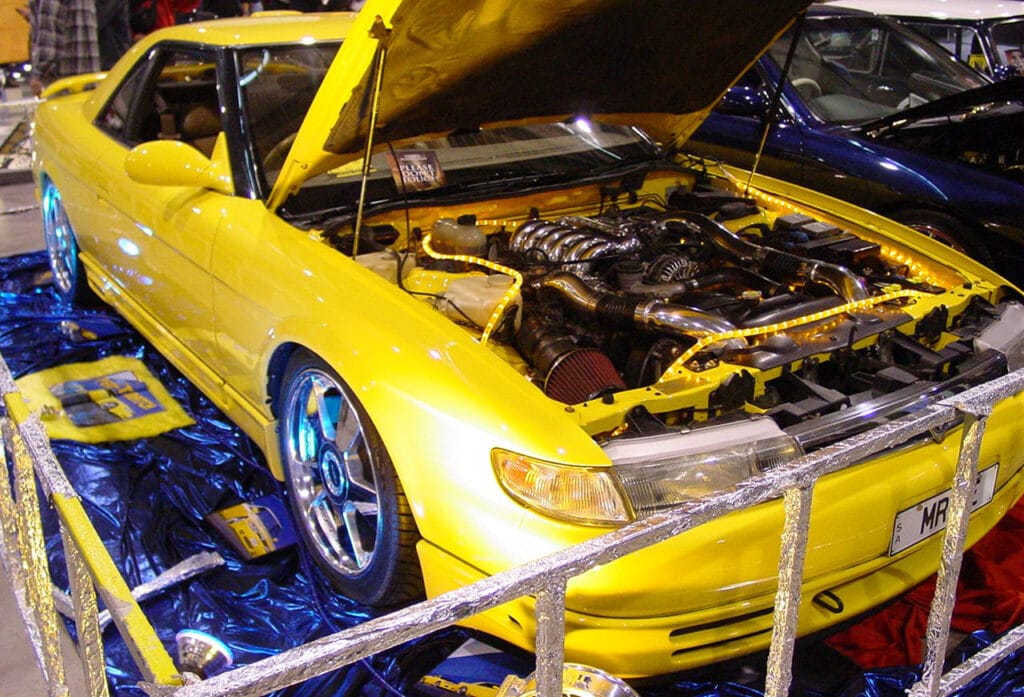
That’s because Mazda only released this vehicle in the Japanese domestic market, and up until 2015, you couldn’t legally import them to the United States without making a ton of modifications.
However, as of 2021, you can now legally import any Mazda Eunos Cosmo into the United States because they’ve passed the 25-year threshold.
But while the Eunos Cosmo is the only vehicle with a stock 20B rotary engine, that hasn’t stopped automotive enthusiasts from engine swapping their vehicle to accommodate the 20B engine.
In particular, the RX-7 is a common vehicle people use, but with enough custom work and money, you can retrofit it into a wide range of vehicles.
How Much Does a Mazda Eunos Cosmo Cost?
Originally released in 1990, you’d expect the Mazda Eunos Cosmo to be available for a lower price tag, but that’s not the case. If you want the version with the 20B engine, the lower end of the price range is $20,000.

However, they’re extremely hard to track down, and you’ll often see them selling for more than $50,000. It all depends on the condition and mileage of the car.
There are a few reasons for the higher price tag. First, Mazda originally released the Eunos Cosmo as a luxury vehicle, not a lower-end budget option. This alone buoys the price some, but it’s really the smallest factor.
Second, a lot of people want these cars. There’s a crazy market for the Eunos Cosmo, especially if they have the 20B rotary engine. Whenever one is available, don’t expect it to stay that way for long.

Finally, every Eunos Cosmo comes from Japan. That means to get them to the United States they need to be imported, and that’s an expensive process.
Whether you do it yourself or simply buy the car after it’s here, you better believe they’re rolling those fees into the price of the car. There are also only so many available in Japan to import, so it’s not like there are tons of cars to choose from in the first place!
20B Engine Specs
Layout: 3-rotor Wankle
Displacement: 2.0 L (1962 cc — 654 cc x 3 rotors)
Fuel System: Electronic Fuel Injection
Compression Ratio: 9.0:1
Power: 276 hp @ 6500 rpm
Torque: 296 lb-ft @ 3000 rpm
Induction: Sequential Twin-turbocharged
Weight: 771 lbs
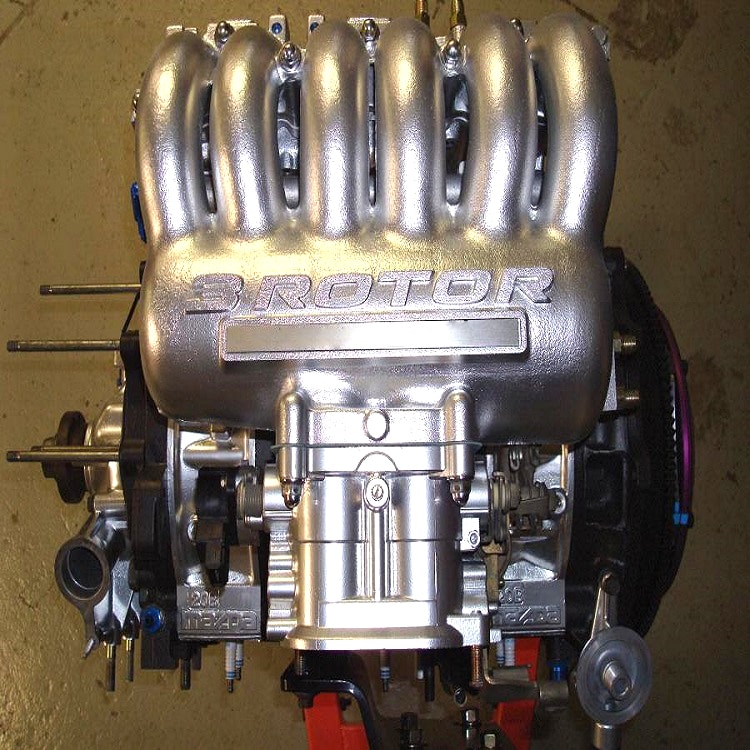
Mazda originally claimed that the engine produced 276 horsepower at 6500 rpm, but like many Japanese cars at the time the Eunos Cosmo fell under the “gentleman’s agreement” that cars wouldn’t produce more than 276 horsepower or exceed 180 km/h.
Because of this many enthusiasts surmise that Mazda never advertised how much horsepower the engine actually produces and that it’s likely much closer to the 300 mark.
Some people report it as high as 320 on their engine. Keep in mind that those numbers are stock, and that’s with a transmission that limits the engine output to 7000 rpm.
However, independent tests have verified that you can safely push the engine to 9000 rpm if you upgrade the transmission. That significantly upgrades the output capabilities.
We know each rotor produces 654 cc of displacement, and the total amount of displacement on the engine is equivalent to a 2.0 L engine, thus the “20” in the name. We also know that the engine provides a ton of torque — 296 lb-ft at just 3000 rpm.
Meanwhile, the 20B racing engine has the same amount of displacement, but it produces 440 horsepower at 8500 rpm.
However, while it has a ton of horsepower, there is a significant drop-off in torque with this engine. It produces 289 lb-ft, but that’s at 8500 rpm.
13B vs 20B Rotary Engines
It’s impossible to discuss the Mazda 20B rotary engine without bringing up the 13B or even the 12A engine for that matter. That’s because there are more 13B rotary engines than any other rotary engine out there, and Mazda made them too.
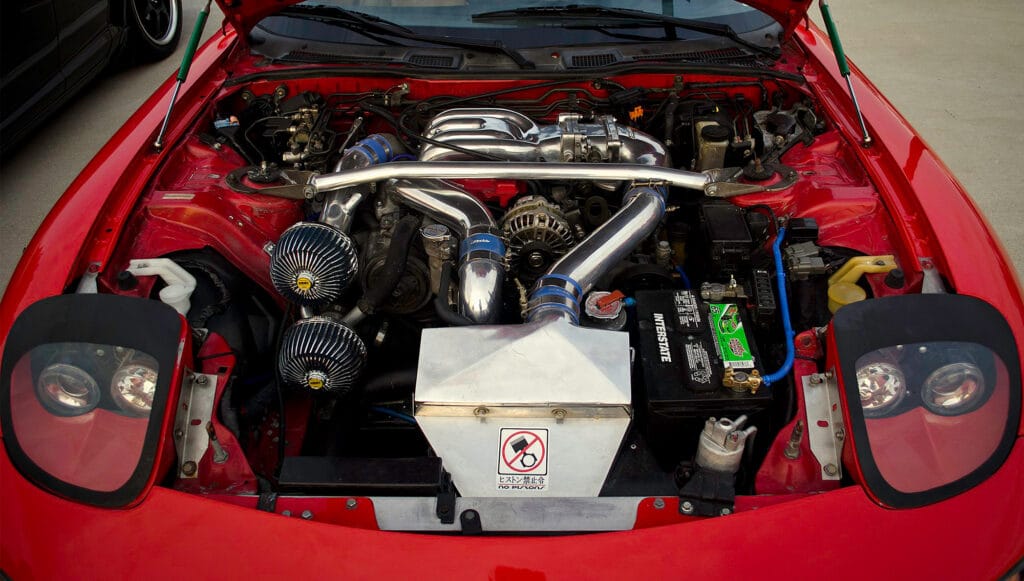
So, if all you care about is getting a rotary engine, it’s typically easier and cheaper to get your hands on a 13B. But just because it’s easier and cheaper, that doesn’t mean it’s what you want.
For starters, the 13B is a much smaller rotary engine than the 20B. While the 20B is a three-rotor engine, the 13B only features two rotors. As a result, the smaller 13B displaces 1.3 L, while the 20B displaces 2 L.
The smaller size and lower displacement numbers lead to a significant drop in power, and the 13B only produces 146 horsepower at 6500 rpm. The torque numbers take a hit too, dropping to 138 lb-ft at 3500 rpm.
So, if all you’re looking at is the performance specs, the 13B is a clear downgrade from the 20B.
But the 13B also went in a lot of different vehicles over the years, and many of them were available in the American market. Below we’ve highlighted some of the cars that got the 13B engine.
| Model Year | Vehicle |
|---|---|
| 1975 to 1980 | Mazda Cosmo AP / RX5 |
| 1974 to 1977 | Mazda REPU |
| 1974 to 1977 | Mazda Parkway |
| 1975 to 1977 | Mazda Roadpacer |
| 1973 to 1978 | Mazda RX-4 |
| 1984 to 1985 | Mazda HB Luce |
| 1984 to 1985 | Mazda FB RX-7 GSL-SE |
| 1986 to 1988 | Mazda FC3S S4 RX-7 |
| 1989 to 1991 | Mazda FC3S S5 RX-7 |
| 1986 to 1991 | Mazda HC Luce Turbo-II |
| 1986 to 1988 | Mazda FC3S S4 Turbo RX-7 Turbo-II |
| 1989 to 1991 | Mazda FC3S S5 Turbo RX-7 Turbo-II |
| 1990 to 1995 | Eunos Cosmo |
| 1992 to 1995 | Mazda RX-7 |
| 1996 to 1998 | Mazda RX-7 |
| 1999 to 2002 | Mazda RX-7 |
Can You Modify a 20B-REW Motor?
While there are a ton of different ways you can upgrade the 20B-REW for significant improvements, none of them take a low-cost approach.
You can easily reach the 300 to 340 horsepower range by swapping out the ECU, but from there you’ll need to swap out the turbos and the transmission to do much more.

Luckily the transmission is pretty easy to swap out, and there are quite a few options out there for you to consider to get more out of your 20B.
You can either swap out both turbos with upgraded options, or you can convert the dual turbos to a more powerful single turbo. If you go this route, there’s a good chance you can push 500 horsepower or more without upgrading some of the engine’s internal components.
Still, you risk damaging other components when you add this much power if you don’t upgrade them too. Finally, if you have a much higher budget, you can get all the way up to 1,500 horsepower with this engine!
How Expensive Is a 20B Swap?
When people talk bout converting a Mazda 20B, they’re typically talking about engine swapping an RX-7 with a 20B rotary engine, but the truth is that it’s not a cheap process.
There’s a common misconception that they ‘bolt in’, but they really don’t. The 20B-REW and 13B-REW from the Mazda Cosmo are as similar as it gets, and even then both engine mounts are not the same. The right side mount is identical, but the left side mount is different.
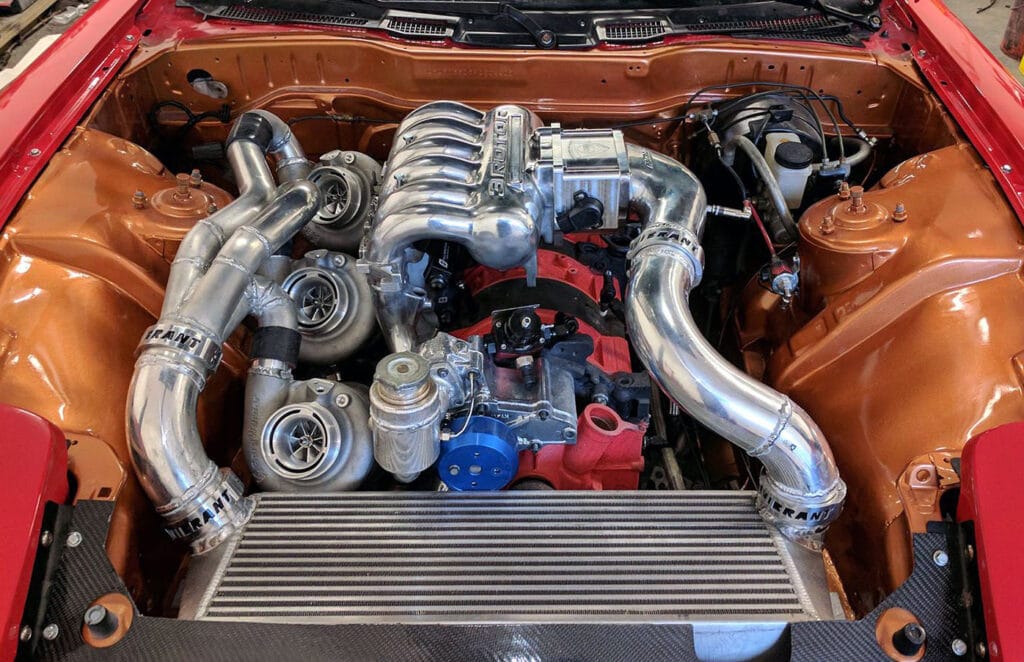
Typically, if you’re completing all the work yourself, you’ll need to spend around $15,000 to do it right. Even then you’ll need access to an extensive mechanic tool kit, and ideally a residential garage car lift.
Because of how much work goes into the conversion, it’s not unheard of to spend $25,000 to $35,000 to engine swap an RX-7 with a 20B rotary engine.
Maintaining a Mazda 20B Rotary Engine
While a rotary engine is a bit different in orientation than a regular engine, there’s not much more to the maintenance from a driver’s standpoint.
You need to keep up with the oil changes, spark plugs, coolant changes, and everything else a typical engine needs.
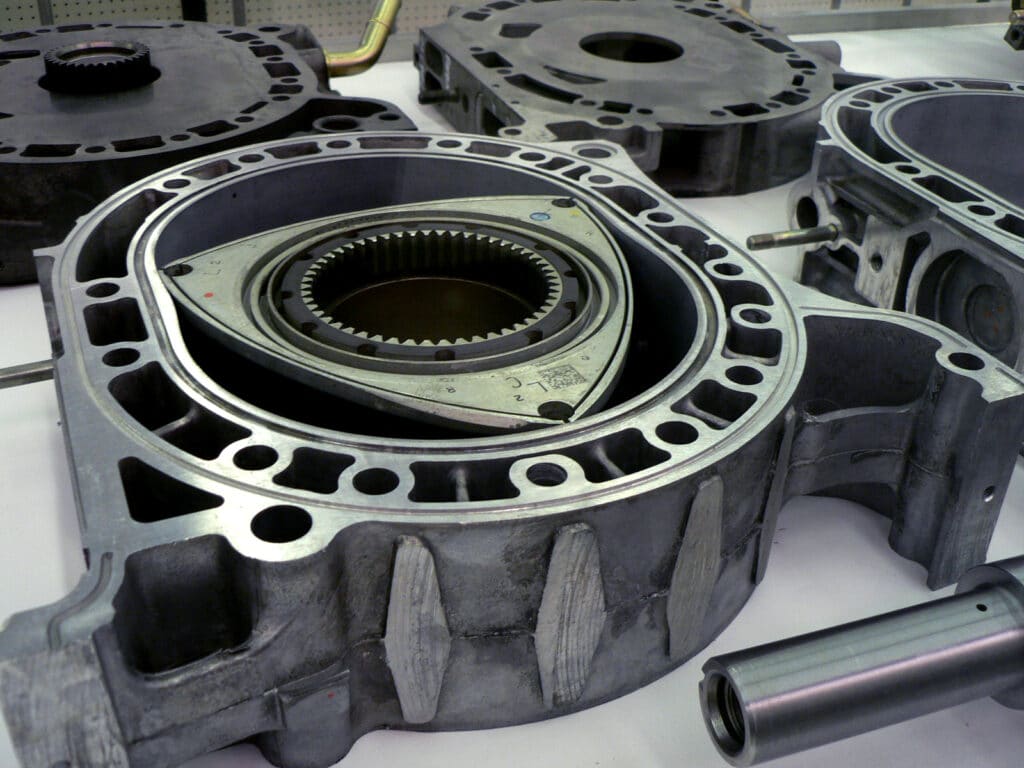
However, when it comes to performing the maintenance on a rotary engine it can be a bit more expensive. That’s because most traditional mechanics don’t typically work on rotary engines, so you’ll need to get a rotary-specific mechanic for anything more than an oil change.
Specialized mechanics cost more money, and that’s certainly a factor to consider if you’re thinking about getting a 20B.
Engine Reliability
With fewer moving parts, a properly cared for 20B rotary engine should easily last anywhere from 150,000 to 300,000 miles or even more if you’re willing to rebuild them when they need it.
However, every engine is different, and sometimes you just get a dud. This is especially true with the 20B because these engines are now between 30 and 40 years old, and unless you have a comprehensive maintenance history you can’t be sure how well the previous owners maintained them.
The last thing you want to do is run a 20B-REW thinking it’s good to go only to break a few components because the previous owner didn’t maintain it the way it should be. So, if you’re unsure, consider an engine rebuild to prevent further damage to the engine and need to start from scratch with a new block.
However, if you do track down a 20B-REW and it needs some work, you’re already talking about a $3,500 to $4,000 bill just to rebuild the engine.
It should be good to go for a while after that with just regular maintenance though, but the rebuild can significantly impact how much money you need to put into it just to get on the road.
Of course, if you skip the rebuild you’re taking a pretty big risk, so there’s really no great answer here if you don’t want to spend the money.
Concluding Thoughts
If you have the cash on hand and want to be the envy of your next cars and coffee, it really is worth considering the Mazda 20B rotary engine.
Do you have questions or any experience you’d like to share about Mazda’s 20B rotary engine? We’d love to hear from you in the comments below.

